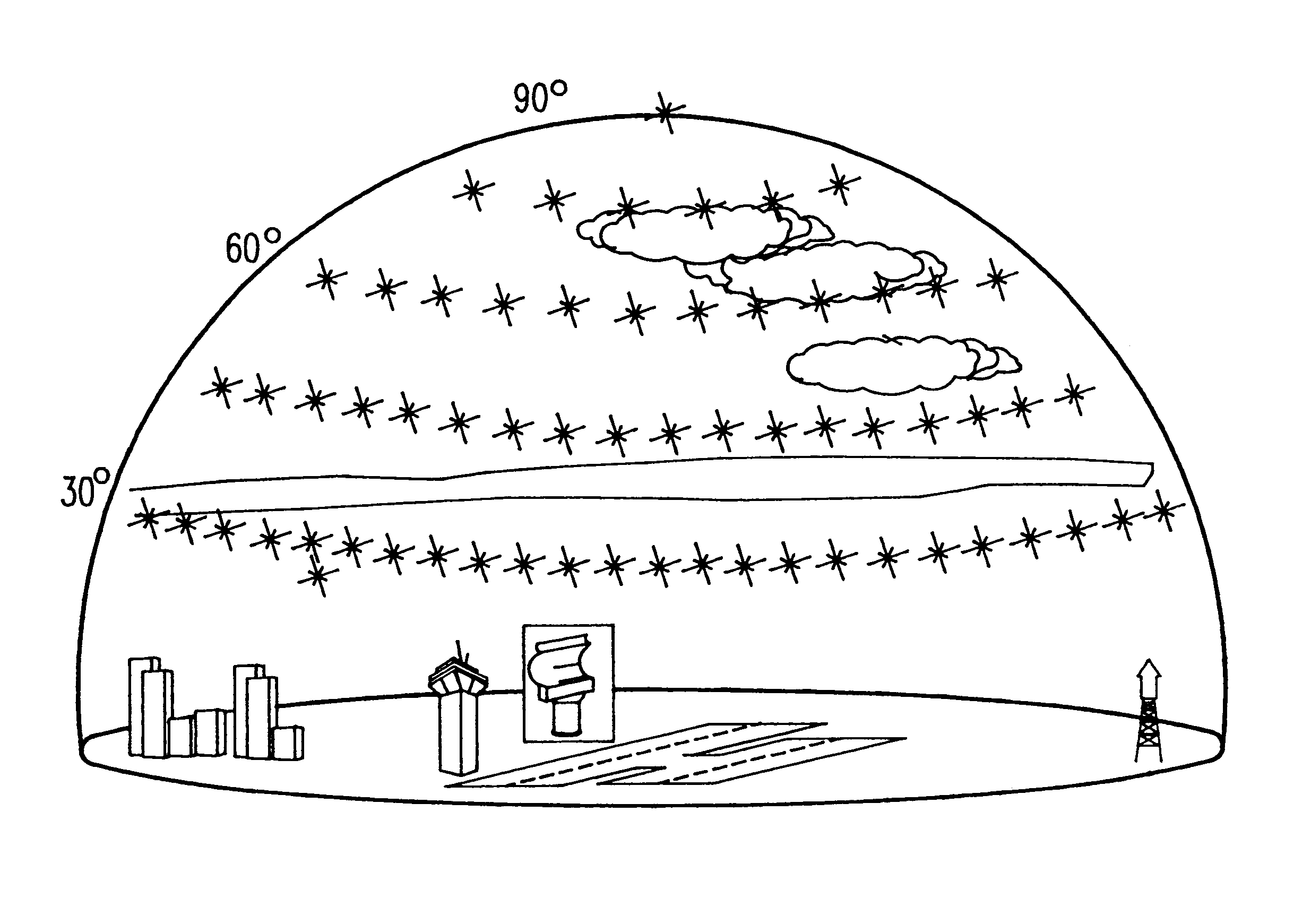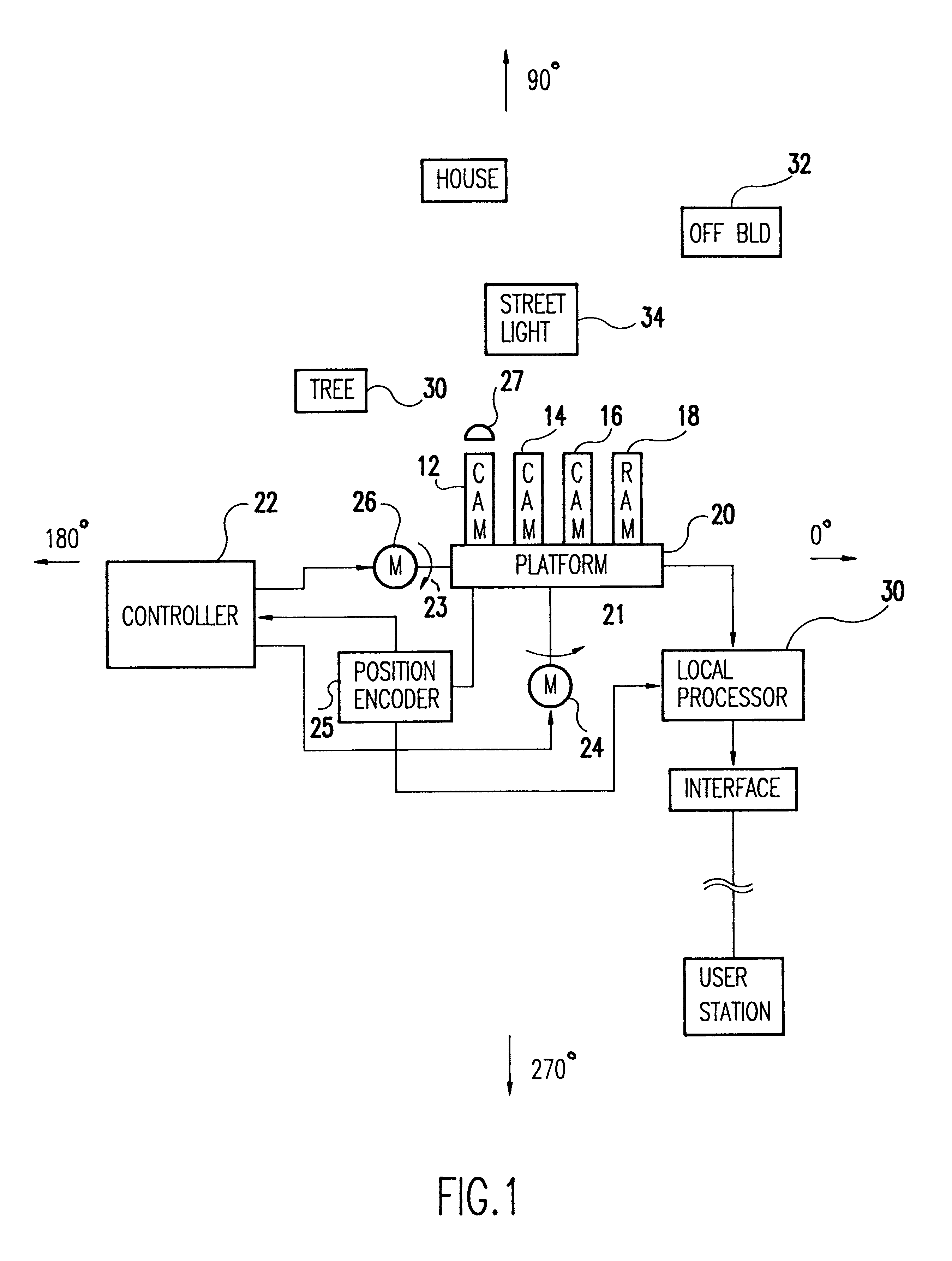Apparatus and method for monitoring and reporting weather conditions
a weather condition and apparatus technology, applied in the field of improved methods and apparatus for monitoring and reporting weather conditions, can solve the problems of reducing visibility, limited human eye ability to see objects through the atmosphere, and general limited approach to sampling only small areas
- Summary
- Abstract
- Description
- Claims
- Application Information
AI Technical Summary
Benefits of technology
Problems solved by technology
Method used
Image
Examples
Embodiment Construction
Referring now to FIGS. 1 and 2, in this preferred embodiment of the invention, a digital visibility camera 12, an observation camera 14, an infrared camera 16, and a laser range finder 18 are mounted on a platform 20, which is gimbal mounted for 360.degree. rotation about a vertical axis 21 and 90.degree. horizontal axis 23. The platform and its associated electronics are enclosed in a weather tight and environmentally controlled enclosure (not shown) with a window through which the cameras and laser range finder are pointed. A servo motor 24 rotates the platform about the vertical axis and a servo motor 26 rotates the platform about the horizontal axis 23. Preferably closed loop servo systems with platform position encoder 25 are used to precisely point the platform in a sequence of selected directions in response to inputs from a controller 22. Each camera, in this exemplary embodiment, has a field view or approximately 15.degree.. Obviously, cameras with larger or smaller fields ...
PUM
 Login to View More
Login to View More Abstract
Description
Claims
Application Information
 Login to View More
Login to View More - R&D
- Intellectual Property
- Life Sciences
- Materials
- Tech Scout
- Unparalleled Data Quality
- Higher Quality Content
- 60% Fewer Hallucinations
Browse by: Latest US Patents, China's latest patents, Technical Efficacy Thesaurus, Application Domain, Technology Topic, Popular Technical Reports.
© 2025 PatSnap. All rights reserved.Legal|Privacy policy|Modern Slavery Act Transparency Statement|Sitemap|About US| Contact US: help@patsnap.com



